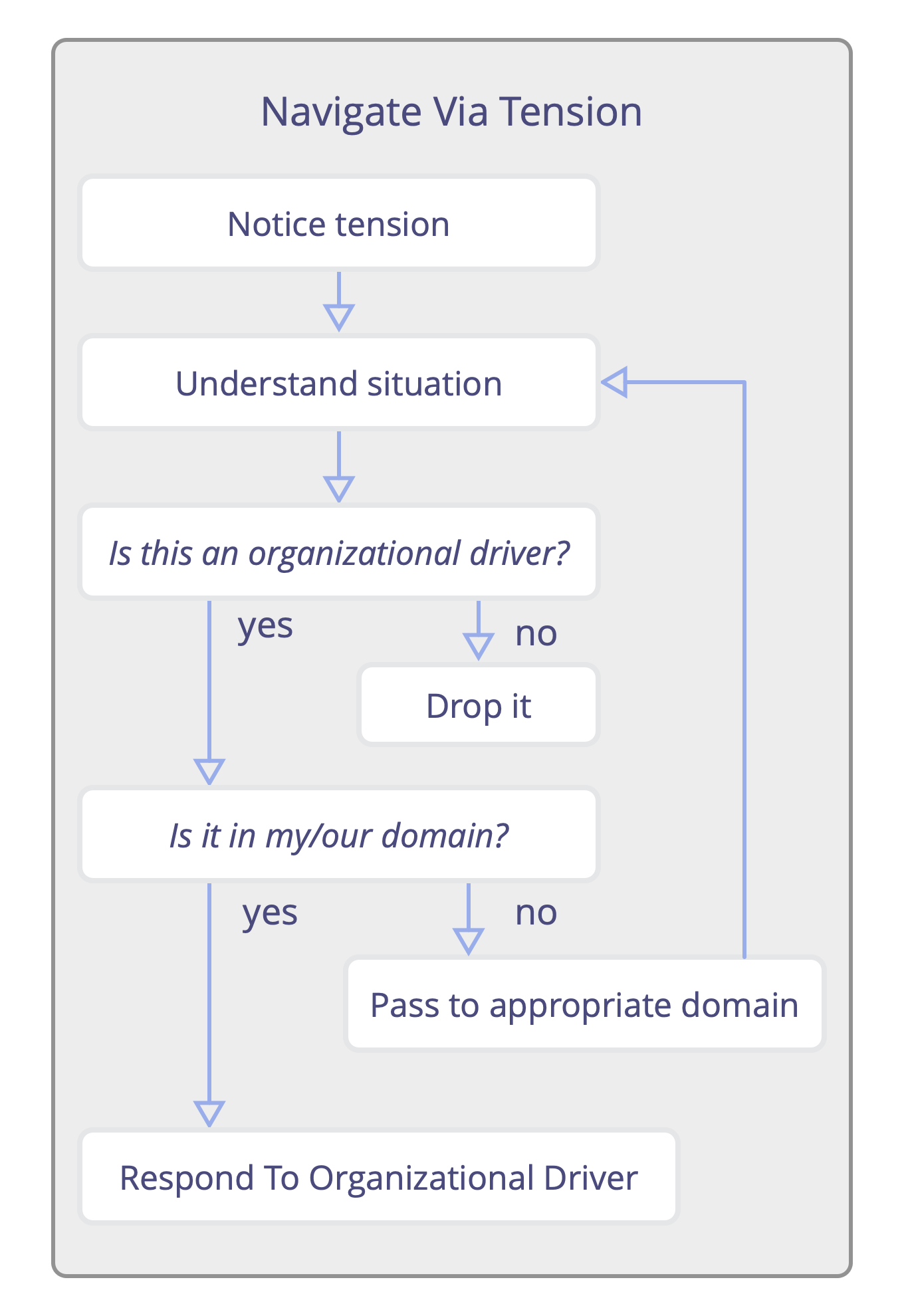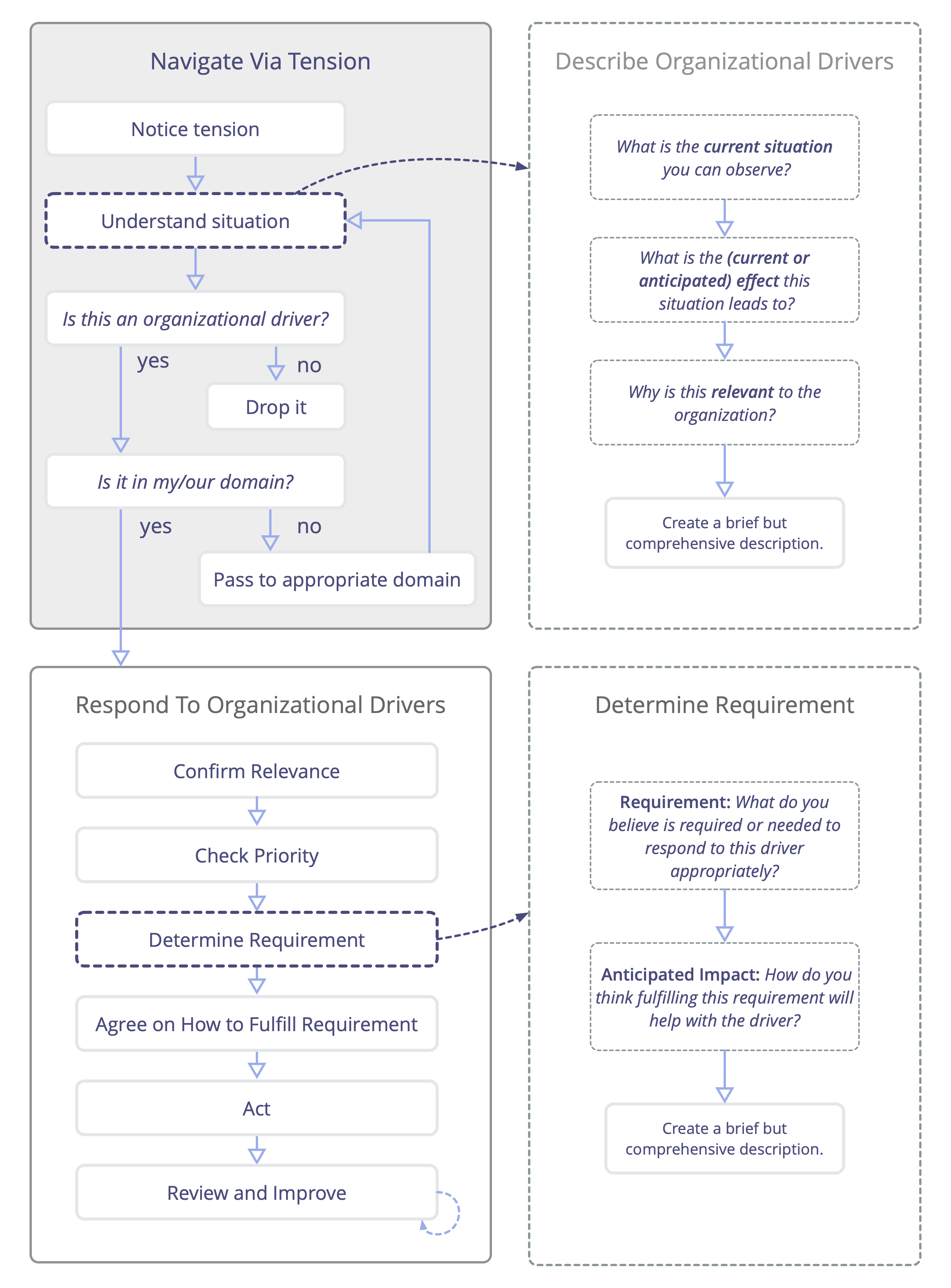Navigate via Tension
Challenges and opportunities for an organization are revealed by people reflecting on the reasons why they experience tension.
Step 1: Notice tension
In this context, tension is an inner state of alert: a personal experience that’s triggered when there’s some kind of dissonance between an individual’s perception of a situation, and what they expect or would prefer to see.
Step 2: Understand situation
Investigate the situation you are perceiving that stimulates tension in you. Sometimes this inquiry can reveal misconceptions and the tension goes away.
Step 3: Is this an Organizational Driver?
A simple way to determine whether a driver is relevant for the organization is by asking the question:
Would responding to this situation help the organization to generate value, eliminate waste or avoid undesirable consequences?
- If you think the answer is yes, it’s likely you’ve identified an organizational driver that needs a response.
- If you think the answer is no, you can ignore the situation and focus on relevant things instead.
- If you are unclear, investigate further, which might include reaching out to others who could have a clearer idea.
Step 4: Is it in my/our domain? If not, pass it on
It could be that the driver falls within the scope of a domain you’re responsible for, in which case you’ll want to place it in your list of priorities and respond to it accordingly (see Respond to Organizational drivers). Even if it does fall outside of your area of responsibility, it might still be something that you are best placed to deal with, or at the very least, you can take care of it without causing any impediments or harm, in which case, consider just doing it. It might not be worth the effort to go and find somebody else and explain to them about the situation if it’s something you can simply deal with yourself.
On other occasions however, you’ll come across drivers that are the responsibility of others to respond to. Therefore, to Navigate Via Tension effectively, there needs to be enough clarity around who is responsible for what in the organization so that people know, or can find out, who to inform about new organizational drivers they discover, so they can pass that information on to them.

